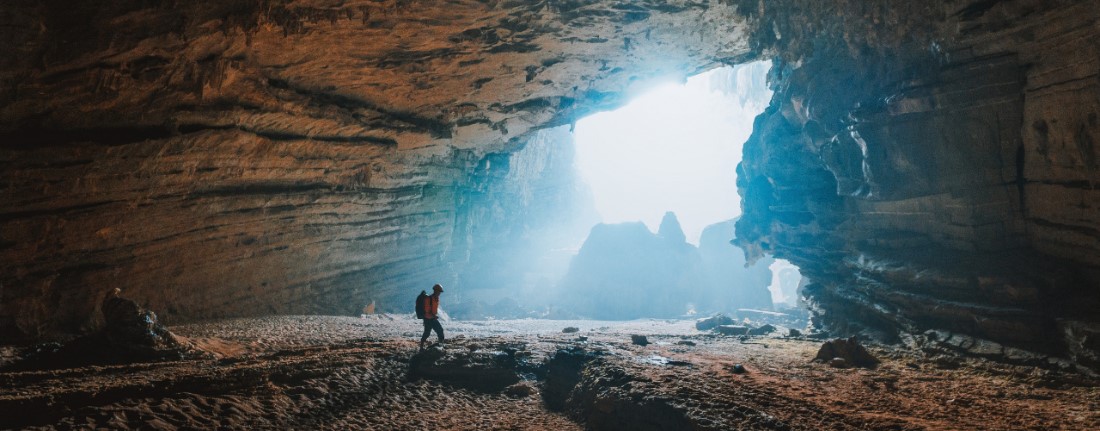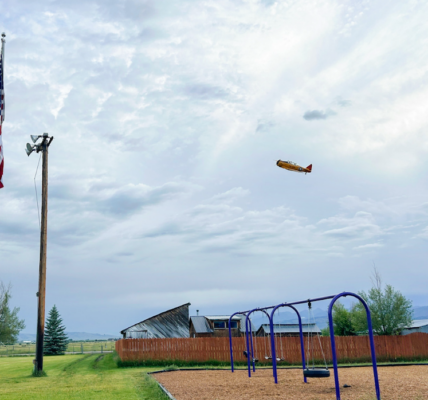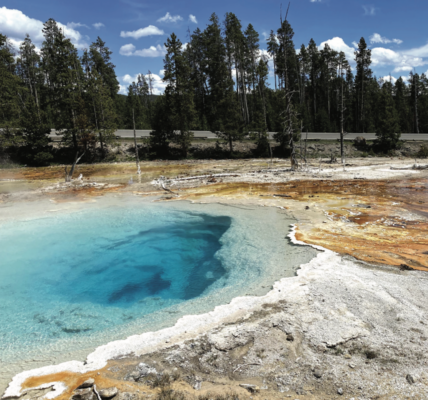For many hikers, caves are a source of adventure and mystery. Knowing that you aren’t the first to venture into that cavern’s territory, you can’t help but wonder what happened there before you came along. As you track forward with walking stick in hand, you’re traveling back in time. Every cave in Wyoming contains a history all its own. Though some of them aren’t accessible to the public anymore, the timeless wonder remains.
Spirit Mountain Cave
Ned Frost discovered this cave 1908 on Spirit Mountain just west of Cody. Although it was originally named Frost Cave, this cavern was more officially known as Shoshone Cavern National Monument due to the public’s interest of the cave as well as the challenging hike to get there. In 1909, not long after its discovery, President Howard Taft declared the cave as Wyoming’s second national monument.
Upon discovery, the site became very popular even with the three-hour hike visitors had to take to get there. However, when the National Park Service took over site management in 1916, they decided to dedicate the limited resources they had to developing Yellowstone, which drove away visitors. For the decades that followed, the cave sat neglected; visitors became unmotivated to climb the steep terrain to see the unpreserved cave, and it quickly went into decline.
Luckily, the Bureau of Land Management took ownership of the cavern, renaming it Spirit Mountain Cave. Visitors still explore the property, however it’s required that you receive a preapproved permit before you’re given the keys to enter.
Horsethief Cave
This cave stretches from the Bighorn Mountains in northern Wyoming into southern Montana. With over 20 miles of challenging passages, this cave is for experienced explorers.
In the late 1800s into the early 1900s, horse rustlers used the cavern to hide stolen horses from lawmen. The partially-hidden property acted as the perfect place to hide larger animals, and the rocky terrain lent itself to establish effective lookout points. It’s estimated that rustlers only used the first 700 feet of the cave; however, modern-day explorers have ventured deeper into the cave. These adventurers discovered many bones—some estimated to be more than 600 years old. With much of the cave to still explore, there’s likely more history to uncover.
Natural Trap Cave
While caves are fun to explore for hikers, scientists love them just as much for excavating. Unlike other caves, this one is unique in that it drops straight down into the Earth. Sitting at the base of the Bighorn Mountains, the cavern is 80 feet deep with a 15-foot-wide entrance. Just to enter the cave, visitors have to repel down into it, spending several feet of the decent in open air.
Though there were no signs of humans living in the cave, many animal fossils are scattered across the cavern floor. Several of the discovered fossils belonged to mammoth, short-faced bear, collarrd lemming, lion, cheetah, and camel. Scientists have collected over 30,000 specimens from the cave over the years—most of which are now extinct.
Like Spirit Mountain Cave, management has gated off the cavern for several years, requiring a permit to explore it. Since many scientists use it for research, they’ve been the only ones permitted onto the premises. 2017 was the last time a team of scientists held an excavation and since then it has remained locked and untouched.





